
In the spring of 2021, the fashion industry made its first attempts to enter the world of NFTs. Back then, amidst the general hype, Kate Moss released a series of videos with the Moments in Time Collective, while former Chanel art director Eric Pfunder turned a series of Karl Lagerfeld’s photographs into NFTs, which he inherited. A year has passed, and the fashion world’s quest into new realms no longer seems as chaotic. Dress-X launched the first NFT marketplace, NFT collections by brands no longer surprise us, and the industry has even acquired its own fashion week in the metaverse.
What is Metaverse?
Metaverses are virtual worlds or environments that exist in digital space and represent an extended or alternative reality. Unlike traditional virtual worlds, metaverses are typically created using blockchain technologies and have their own digital economies and ecosystems.

In metaverses, users can interact with other participants, create and customize virtual characters, build and decorate virtual objects and homes, participate in various events and activities, as well as trade digital assets such as NFTs (non-fungible tokens) and cryptocurrencies.
Metaverses provide users with unique opportunities for creativity, social interaction, and economic activity, as well as open up new prospects for the development of industries such as gaming, entertainment, education, and even fashion and art. They also play an important role in advancing virtual and augmented reality technologies.
Nike releases sneakers with NFTs.

Nike has become a leader in NFT adoption in the fashion world thanks to its acquisition of the crypto startup RTFKT in 2021, which led to the release of a range of sneakers with token gates. Since then, these sneakers have been in high demand. Until recently, purchasing real RTFKT sneakers required an expensive NFT. However, Nike’s latest collaboration with RTFKT changes that.
Nike launched the pre-sale of its new model – RTFKT Dunk Genesis sneakers. Now anyone can buy them without owning an RTFKT NFT. The RTFKT Dunk Ghost Edition and Dunk VOID Edition sneakers cost $222 per pair, and t-shirts with the brand logos and the inscription “Oops, You Stepped Into the Future” on the front are also available.

Both styles of sneakers have a futuristic design and unique features, such as the “Vial Clip Tongue” and “Modular Heel Shield” modules that can be customized as desired. Additionally, Nike offers 3D files so owners can create their own mods.
Although purchasing the sneakers does not require an NFT, they are still linked to this technology. Each pair has an embedded Near Field Communication (NFC) chip called the RTFKT World Merging chip, which allows the owner to receive a digital collectible item and connect the physical product with the digital collectible item.

Deliveries of the VOID Edition sneakers are expected to begin by July 31, 2024, and the Ghost Edition sneakers by August 31, 2024. Nike and RTFKT have already opened an exclusive pre-order window for owners of existing NFTs ahead of the public sale.
It is unclear which blockchain Nike and RTFKT will use to mint NFT-related collectibles, but RTFKT has previously used Ethereum. Nike also has its own Swoosh digital hits platform on the Ethereum scalable network.
Previously, Nike released the RTFKT x Nike Air Force 1 sneakers, which required the purchase of an NFT, and discontinued the CryptoKicks sneakers in 2022. NBA star LeBron James was spotted wearing the RTFKT x Nike Air Force 1 sneakers before a Lakers playoff game in May.

RTFKT is also known as the creator of Clone X, a collection of NFT profile images (PFP). To date, they have generated sales of $852 million, with secondary market prices starting at 1.4 ETH or around $2850 USD.
However, the main trend is extremely simple and does not have a direct relation to fashion.
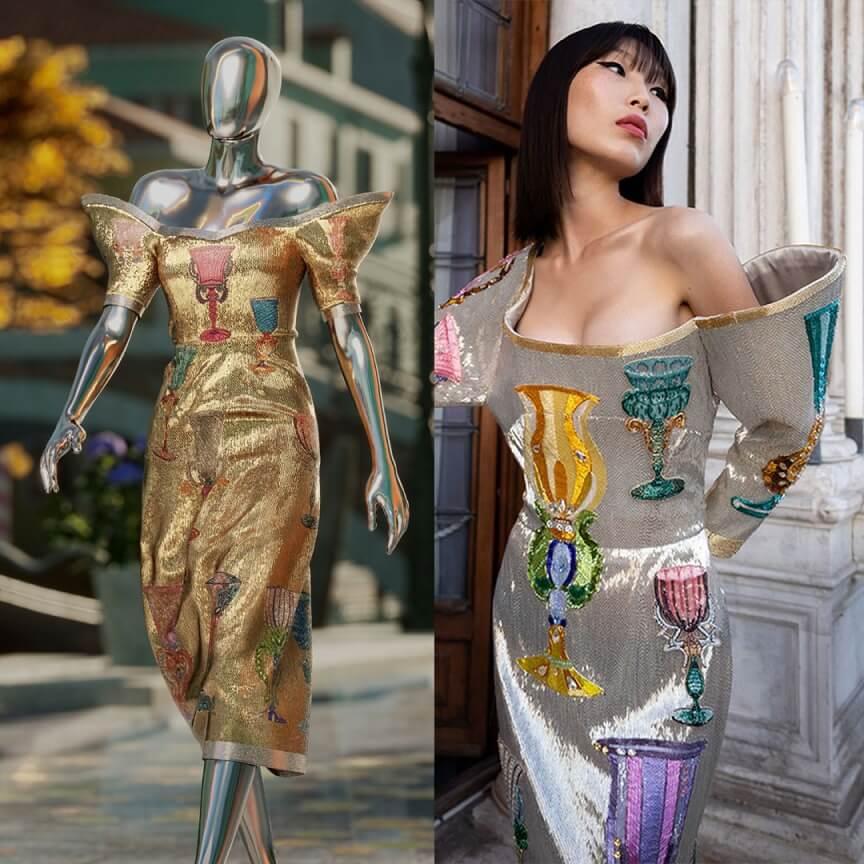
Where there’s cryptocurrency, there are profits. You can doubt cryptocurrencies, you may not understand how they work, but it’s impossible to argue that the most famous cryptocurrency — Bitcoin — has grown in value tenfold over the past 5 years (even with the spring decline). Many crypto enthusiasts have fantastically enriched themselves in just a few years. It’s no wonder that BoF named members of the crypto community as some of the main consumers of the most expensive fashion right now. “We deal with magical internet money, so I think our tendency to spend large sums of money on random, useless things that are more entertaining and largely impractical is much higher. Because we don’t handle our money like people in other industries,” confirmed Meltem Demirors, a crypto investor and strategic director of CoinShares, supporting this hypothesis.
A wealthy and yet not too experienced audience — that’s the dream of Philipp Plein. It’s not surprising that he started working on the new market for the industry more actively than others, launching the concept store of NFT art in London and in Web 3.0 simultaneously, creating an NFT collection, and even buying a piece of land in the Decentraland metaverse for $1.4 million.
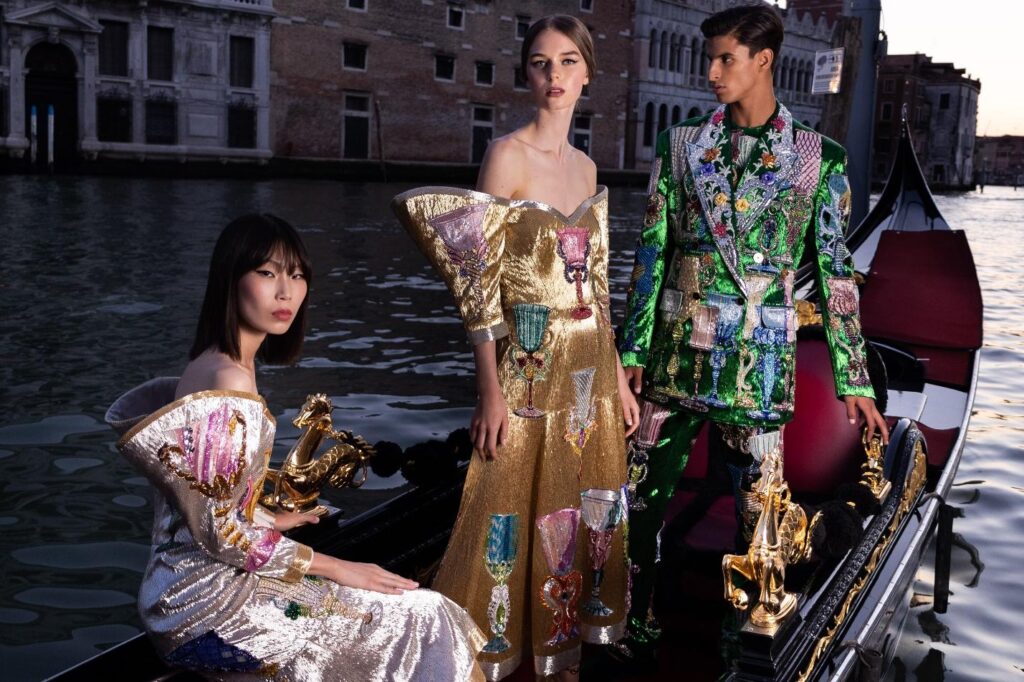
Older and more solid brands decided that cryptocurrency shouldn’t be spent but earned. First, the brand Gucci, owned by the Kering conglomerate, announced that it would start accepting cryptocurrency as payment in five American cities (New York, Los Angeles, Miami, Atlanta, and Los Angeles) by the end of May, and in the summer, crypto sales would cover the entire country. On May 20th, the LVMH conglomerate announced that TAG Heuer watches could now be purchased with cryptocurrency, and the brand plans to become a flagship in this market. Kering’s response was not long in coming — just a couple of days later, they announced that Balenciaga would also accept cryptocurrency payments. For now, it’s only about purchases in the USA, but soon cryptocurrency payments are planned to be introduced worldwide. And if the plan works, then probably everyone will want to replicate the blockchain successes of Dolce & Gabbana, who in September 2021 released and completely sold out the NFT collection Collezione Genesi. For nine dresses, the brand received 1885 Ethereum (approximately $5.65 million), setting a record for fashion brands in NFT sales. It’s worth noting, however, that each buyer, in addition to the token itself, received a suit tailored to their measurements and access to Dolce & Gabbana couture shows for a year. It’s a good way to earn and attract a new audience. Especially since, according to the State of Fashion: Technology report, the NFT market skyrocketed from $41 million to $24.9 billion from 2018 to 2021.
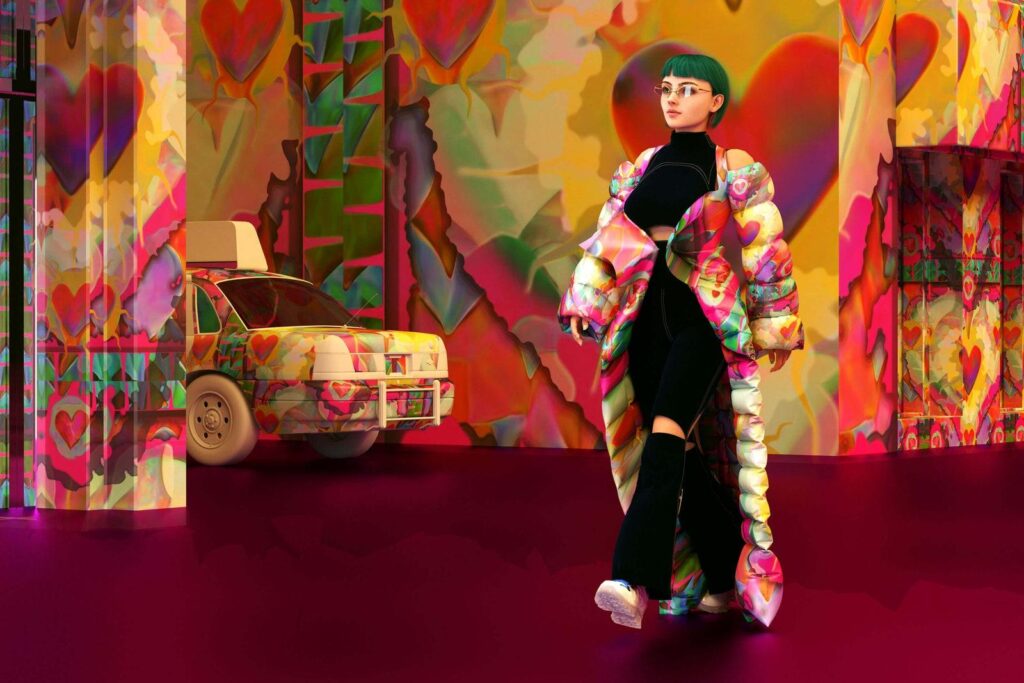
Gucci, Nike, and Dolce & Gabbana aren’t taking huge risks by entering these lucrative waters, but independent designers and brands investing should be more cautious. “For a designer to enter the metaverse, a business plan is needed. Primarily because the cost of placing one clothing item there, based on the proposals I’ve considered, starts at $1,500. That’s a significant investment,” explains Snezhana Paderina. Simply creating your own NFT product isn’t enough either. Some participants of The Blue Store, the brand KAZAKI, attempted to enter the NFT world this way. Last summer, they created an NFT jacket with graffiti about mental health. It was intended that by purchasing this NFT at auction, a person could receive not only a digital jacket but also a physical copy — a seemingly cool story, but it didn’t bring anything to the brand. “The platform placement cost me around $90. Payment could only be made in cryptocurrency, and while creating a crypto wallet is simple, finding someone who could exchange cryptocurrency for regular money is more difficult. In the end, acquaintances helped me with Ethereum. When uploading the NFT to the platform, I had a choice — either to publish with a fixed price or to publish with an auction. After watching internet tutorials on YouTube, I decided to opt for a three-day auction for the first time. Nobody bought the jacket because it didn’t make it to the top, and consequently, nobody saw the publication, so we quickly just took it off sale,” says Alina Kazakevich, co-founder of the brand.

Based on her experience, a competent team is necessary for the project to be successful — handling NFT on a residual basis is pointless. The founder of the marketing agency DEPARTÁMENT, which is actively working with NFTs and metaverses, including in communications with fashion brands, believes that the key people in such a team should be trend analysts. “Every day we see a high degree of volatility in the cryptocurrency market, on which much of the NFT story is based. Of course, there is a certain risk for a brand to enter this territory because you can sell your item for, let’s say, 100 units of cryptocurrency, and then a couple of days later, the cryptocurrency will fall by two or three times, and this item will be devalued on the market by itself. While you seemed to have thought of everything nicely, wrapped it up, and presented it. This will also result in a certain amount of brand damage. Therefore, the most important thing is trend watching and strategy to plan your moves,” he says. Additionally, practical specialists are needed to implement all ideas. “These are specialists in 3D modeling, 3D designers, art directors, and, of course, IT specialists who, if necessary, will help create a smart contract or model a particular item,” explains Nedostoyev. This is precisely why DEPARTÁMENT has opened an architectural bureau within the agency for metaverses, whose specialists design virtual galleries, boutiques, and other formats for brands and private collectors. They are also launching the Creative Universe project, an exchange platform for creative industry specialists, where professionals can sell their services and creators can sell products.

Young brands, obviously, cannot afford their own NFT team or the services of external agencies, so they seek collective solutions. “Currently, many designers from St. Petersburg and Moscow are joining forces and exhibiting in NFT galleries, and participation is currently free. Everyone benefits: creators promote the platform and immediately sell their NFTs, which many are actively buying as an investment tool,” says Snezhana Paderina. According to Egor Lapshov, the trend towards collaboration is also related to the popularity of DAOs, decentralized autonomous organizations. “There is such a Meta Factory DAO, an investment fund that raised about $7 million in investments last year. They created a community of people interested in fashion. You, for example, are a young digital designer and want to promote your collection. You come with its digital version, and through an open DAO vote, you get the opportunity to create a digital version of this clothing and funding for the physical version. Then it’s sold as an NFT, and alongside it comes the physical version. Of all fashion initiatives, this one seems to me to be the most interesting and innovative,” he says.
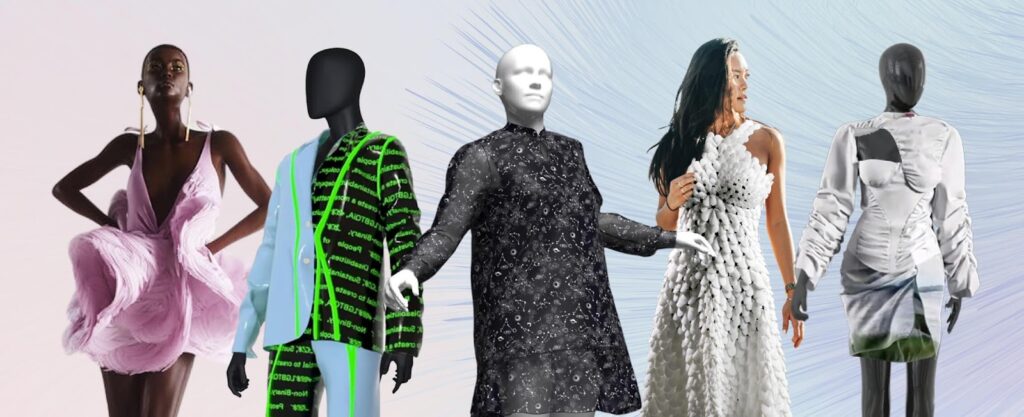
One advantage of Meta factory, according to Egor, is that it lowers the barrier to entry into the fashion metaverse for both designers and buyers, which addresses one of the main goals of metaverses and NFTs in general. Among such goals is transparency, which is necessary in the fashion industry not only for tracking shipments or counterfeits but also in terms of earnings for independent brands. “If a musician on Spotify gets around 10% of what the platform earns, when you sell music with NFTs, you can get 80–90% of the earnings. The same goes for fashion,” explains Egor Lapshov. Snezhana Paderina is also convinced that if you figure out how to enter the metaverse with your own virtual clothing at lower costs, it will be beneficial to many designers, as they can avoid placing their items on expensive marketplaces with high commissions. “It’s easiest for young brands to establish themselves in the metaverse through digital clothing sales. It’s probably unnecessary to explain why such clothing is needed and who needs it (digital fashion has already become entrenched not only in the gaming world but also in social networks, and with metaverses, it’s about to become almost a mandatory part of the wardrobe), so the metaverse is a good channel for selling it. Almost all NFT platforms give a percentage to the author upon resale. Not only do you sell these items as the author, but you also receive about 10% of the resale,” she says. By the way, fashion already has its first NFT marketplace — launched by the Dress-X team, which quickly partnered with well-known brands. For example, the New York-based brand Dundas sold NFT copies of H.E.R.’s stage costumes worn at the 2022 Grammys here.
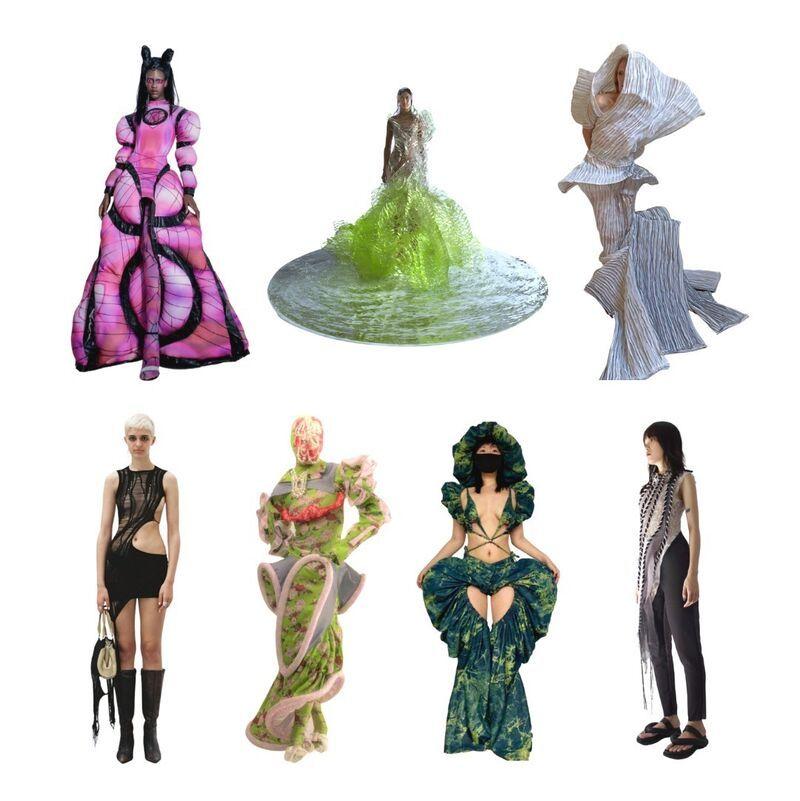
The Business of Fashion sees the most optimal way for brands to enter the metaverse as creating virtual clothing or NFT tokens that duplicate physical items. Pavel Nedostoev is also convinced of the prospects of this direction, as it coincides with global trends towards sustainable development and exclusivity. “For a long time, I collected unique items myself. For example, I have dozens of pairs of rare sneakers. These are attributes of ownership that are pleasant to possess, but, frankly, inconvenient. Firstly, shoes take up a lot of space, and secondly, you can’t take them all with you at once, which is especially acute in the current political situation. It’s not very liquid because I’m not interested in resale — nor am I interested in trading or, for example, refreshing pairs. But I like owning and possessing them. In this regard, NFT is an interesting solution because you can collect such a collection virtually. You can buy an NFT with a monkey, put it on your avatar, and it will be your status symbol, like any car or Louis Vuitton item. You change your place of residence, countries, but you can always open your NFT collection and show what you have — remember what you own. And if you need to, in two clicks, you can put it up for sale,” he says.
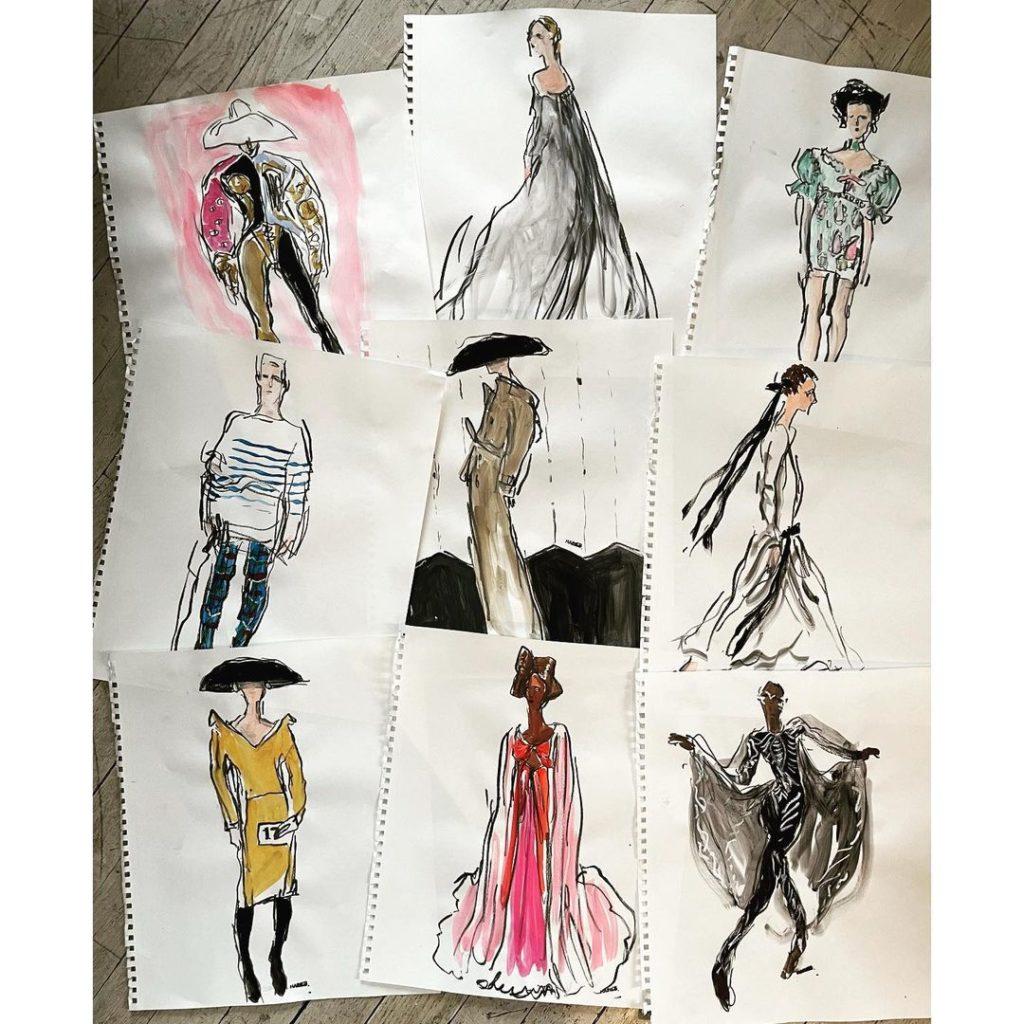
At DEPARTÁMENT agency, Nedostoev helps brands enter the metaverse not only with NFT tokens but also with more extensive projects — shows, performances, and concerts. The agency’s first such experience dates back to 2016. “We built a virtual reality cinema for Audi. Roughly speaking, we created our own world in which we presented the Audi Q7 car at the Garage Museum, which caused a sensation,” he recalls. Indeed, creating virtual experiences is considered the second most significant working strategy for brands by BoF. Gamification comes in third place, where Louis Vuitton feels quite comfortable, being one of the first to collaborate with computer games, particularly partnering with one of the most popular computer games, League of Legends. Kering has also been active, with Gucci inventing the Gucci Drive game in 2020 in collaboration with the British esports organization Fnatic. Today, they are going further by launching their own gaming academy.
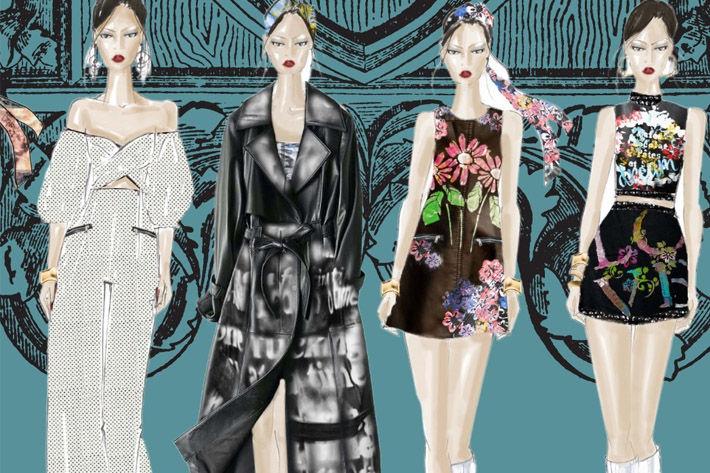
Experts advise brands to invest in partnerships with existing metaverses and NFT platforms, but if they can’t find like-minded partners, they should create their own. So far, sports companies are leading the way in this regard. In March, it was announced that Nike’s store in the Roblox metaverse, launched in November, was visited by nearly seven million users from more than 200 countries. And this is just the beginning of the brand’s conquest of the metaverse — after acquiring RTFKT, a startup creating virtual sneakers, in December 2021, the development of Nike Virtual Studios for its own NFTs and other digital products has become a top priority.
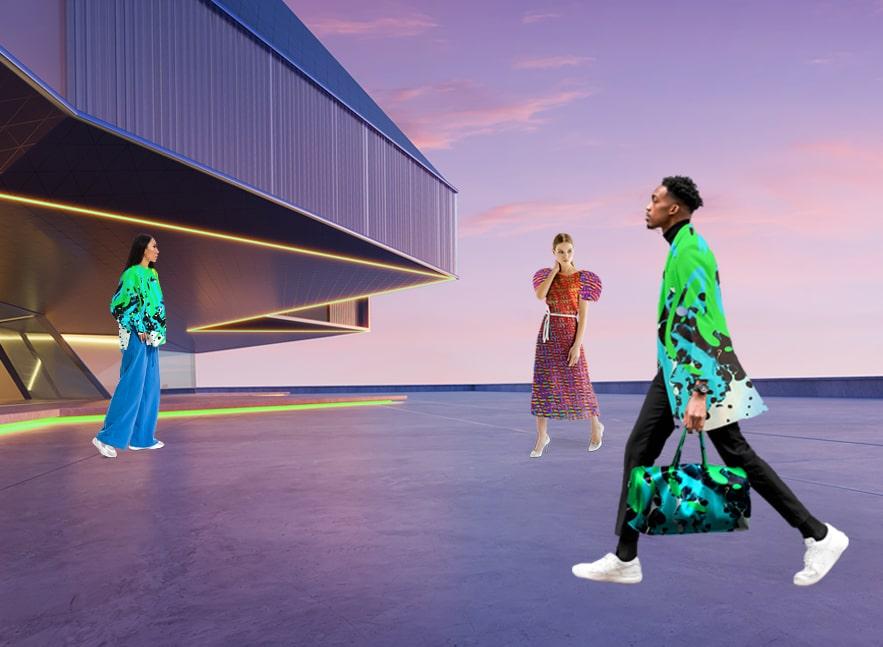
Pavel Nedostoev is convinced that NFT tokens can solve even more significant problems facing the modern fashion industry, such as overproduction. “By developing such things, you don’t produce anything. You don’t have problems with leftover materials, and brands don’t secretly dump anything in landfills. Consequently, there are no scandals,” he says. This argument attracts support for NFT from Stas Falkov, the founder of the Kruzhok collective, who initially approached NFT with skepticism. “We’ve generally encountered a crisis of mass production. First, production conceptually carries many harmful consequences. Second, my work at Kruzhok involves dealing with items created as unique pieces of art. Essentially, on an NFT platform, a person can buy these artifacts, and NFT serves as a tool here, which allows securing everything from a digital perspective, as well as documenting the sale. Plus, the value of a digital copy can essentially cover not only the work of a digital designer but also the creation of a real artifact,” he explains.

Before the events in February, Kruzhok even started working on its own metaverse. “We envisioned it as an app where you could see the workshops, showrooms of our designers, and friends. On the city map, we wanted to mark objects of our acquaintances, partners from the local community. The concept was grandiose, but now it’s on hold. And so in 99% of cases, I can’t find anything interesting in the metaverses. For me, it’s primarily a tool, not meaningless pictures,” he says. According to all experts, the more fashion professionals approach metaverses and NFTs as tools, the more useful and genuinely interesting initiatives they will generate. And along with that come job opportunities. “There is already a need for community managers for showrooms and galleries in metaverses. These are virtual salespeople, consultants. They have avatars, they interact with visitors using specific technology. The salary of such an employee is currently around 600 euros per month,” says Snezhana Paderina. Over time, there will be more formats of interaction with customers in the metaverse, as well as corresponding job openings. So while plenty of professionals are entering the real job market, the virtual job market is filling up with relevant vacancies. It’s time to update your resume because exciting career opportunities await us in the metaverse soon.
Сonclusion:
In conclusion, the integration of NFTs into the fashion industry, particularly in the realm of sneakers, represents a significant shift towards digital ownership and innovation. Nike’s collaboration with RTFKT to release NFT-linked sneakers demonstrates the growing trend of leveraging blockchain technology to create unique and collectible fashion items.

This move by Nike not only democratizes access to exclusive sneakers by allowing anyone to purchase them without owning an NFT but also highlights the fusion of physical and digital worlds. The incorporation of NFC chips into the sneakers enables owners to access digital collectibles, enhancing the overall ownership experience.
Furthermore, the success of NFT-powered fashion extends beyond Nike, with other brands exploring similar initiatives to engage with tech-savvy consumers and tap into the burgeoning digital collectibles market. The concept of owning virtual assets like digital sneakers adds a new dimension to personal expression and status symbols, resonating with a generation increasingly immersed in digital culture.

Overall, the convergence of NFTs and fashion represents a paradigm shift in how we perceive and interact with clothing and accessories. As technology continues to evolve, we can expect further innovations and collaborations that blur the lines between physical and digital fashion, reshaping the industry landscape and consumer behaviors.
FAQ:
1. What are NFTs?
NFTs, or non-fungible tokens, are unique digital assets that represent ownership or proof of authenticity of a particular item or piece of content, such as artwork, music, videos, or virtual fashion items. Unlike cryptocurrencies like Bitcoin or Ethereum, which are fungible and can be exchanged on a one-to-one basis, each NFT has distinct characteristics and cannot be replicated or replaced.
2. How do NFTs work in the fashion industry?
In the fashion industry, NFTs are often used to tokenize digital clothing, accessories, or other fashion-related content. Brands or designers create digital versions of their products and mint them as NFTs on blockchain platforms. These NFTs can then be bought, sold, or traded like any other digital asset. Additionally, NFTs can be linked to physical products, providing proof of ownership or access to exclusive content.
3. What is the metaverse, and how does it relate to NFTs and fashion?
The metaverse refers to a collective virtual space created by the convergence of digital technologies, including virtual reality (VR), augmented reality (AR), blockchain, and the internet. In the metaverse, users can interact with each other and digital objects in real-time, creating new opportunities for socialization, entertainment, and commerce. NFTs play a significant role in the metaverse by enabling ownership and monetization of digital assets, including virtual fashion items.
4. How are brands leveraging NFTs in the fashion industry?
Brands are leveraging NFTs in the fashion industry in various ways, including creating digital collectibles, virtual fashion shows, and limited-edition collaborations. By minting fashion items as NFTs, brands can engage with tech-savvy consumers, tap into the growing market for digital collectibles, and experiment with new business models. NFTs also offer opportunities for brands to enhance the ownership experience, provide proof of authenticity, and generate additional revenue streams.
5. What are the benefits and challenges of NFTs in fashion?
Some benefits of NFTs in fashion include increased brand engagement, enhanced ownership experience, and new revenue opportunities. NFTs also offer the potential for greater transparency and authenticity in the fashion industry. However, challenges such as high entry barriers, technological complexity, and environmental concerns associated with blockchain transactions remain. Additionally, the speculative nature of the NFT market and the risk of copyright infringement are also significant considerations for brands entering the space.
6. How do NFC chips enhance the NFT experience in fashion?
NFC (Near Field Communication) chips are embedded in physical fashion items, such as sneakers, and are linked to corresponding NFTs. These chips enable owners to interact with their digital collectibles by simply tapping their smartphones or other NFC-enabled devices to the item. This seamless integration between physical and digital worlds enhances the overall ownership experience and adds value to the fashion product.
7. What impact do NFTs have on sustainability in the fashion industry?
NFTs offer potential solutions to sustainability challenges in the fashion industry by reducing overproduction and minimizing waste. By creating digital versions of fashion items as NFTs, brands can satisfy consumer demand for exclusive products without the need for physical manufacturing. This approach helps conserve natural resources, reduce carbon emissions associated with production and distribution, and promote a more environmentally friendly fashion ecosystem.
8. How are independent designers and emerging brands navigating the NFT space?
Independent designers and emerging brands often face challenges in entering the NFT space due to limited resources and expertise. Many seek collective solutions by collaborating with other designers or joining NFT galleries and platforms. Additionally, some brands leverage decentralized autonomous organizations (DAOs) or crowdfunding mechanisms to fund NFT projects and engage with their communities.
9. What role do trend analysts play in the success of NFT initiatives in fashion?
Trend analysts play a crucial role in the success of NFT initiatives in fashion by monitoring market trends, consumer preferences, and technological developments. Their insights help brands identify opportunities, mitigate risks, and develop strategies to navigate the rapidly evolving NFT landscape. By staying informed and adaptive, brands can effectively leverage NFTs to engage with their audiences and drive innovation in fashion.
10. What are the future prospects for NFTs and fashion?
The future prospects for NFTs and fashion are promising, with continued innovation and collaboration expected to drive growth in the market. As technology advances and consumer behaviors evolve, we can anticipate further integration of NFTs into fashion, including virtual try-on experiences, personalized digital wardrobes, and immersive metaverse fashion events. Additionally, regulatory developments, industry standards, and sustainability considerations will shape the future trajectory of NFTs in fashion.
11. How do NFTs contribute to the authenticity and provenance of fashion items?
NFTs serve as unique digital certificates of authenticity and provenance for fashion items, providing irrefutable proof of ownership and origin. Each NFT is securely recorded on a blockchain, ensuring transparency and immutability of ownership records. This helps combat counterfeiting and ensures that consumers can verify the authenticity and history of their fashion purchases, thereby instilling confidence and trust in the products they buy.
12. What are the implications of NFTs for copyright and intellectual property rights in the fashion industry?
NFTs introduce new challenges and opportunities regarding copyright and intellectual property rights in the fashion industry. While NFTs can facilitate the monetization of digital fashion designs and artworks, they also raise questions about ownership, licensing, and copyright infringement. Brands and designers must navigate these legal complexities by establishing clear ownership rights, licensing agreements, and enforcement mechanisms to protect their intellectual property in the digital realm.
13. How are fashion brands leveraging NFTs to engage with their audiences?
Fashion brands are leveraging NFTs to engage with their audiences through interactive and immersive experiences. They host virtual fashion shows, digital art exhibitions, and metaverse events where consumers can explore, interact with, and even purchase NFT-backed fashion items. Brands also collaborate with artists, influencers, and creators to create exclusive NFT collections, fostering community engagement and brand loyalty among tech-savvy consumers.
14. What are the risks associated with investing in NFT-backed fashion items?
Investing in NFT-backed fashion items carries inherent risks, including market volatility, technological vulnerabilities, and regulatory uncertainties. The value of NFTs can fluctuate unpredictably based on factors such as demand, speculation, and changes in consumer preferences. Additionally, NFT platforms and marketplaces may be susceptible to hacking, fraud, and manipulation, posing risks to investors’ assets and data security. It’s essential for investors to conduct thorough research, exercise caution, and seek professional advice before entering the NFT market.
15. How do NFTs contribute to the democratization of fashion ownership?
NFTs contribute to the democratization of fashion ownership by removing traditional barriers to access and empowering individuals to participate in the fashion economy. Through fractional ownership, crowdfunding, and peer-to-peer trading, NFTs enable consumers to acquire shares of digital fashion assets and participate in exclusive collections that were previously inaccessible. This democratization fosters inclusivity, diversity, and creativity in the fashion industry, allowing a broader range of individuals to express their style and identity in the digital age.

